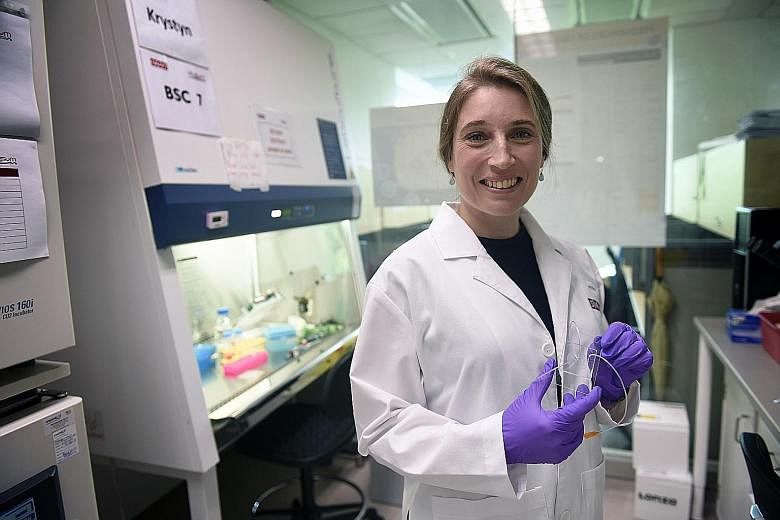Researchers already have the technology to take immune cells out of a cancer patient's body and engineer them to home in on damaged cells so that they can be put back in the body to fight the disease - which often uses an "invisibility cloak" to evade the body's defences.
But there is one stumbling block, and it is in a less glamorous area of science. Technology is lagging behind in growing the cells in quantities large enough to make a difference to those who are sick.
"Often the excitement is in identifying new cell therapies that help in improving the health of a patient. But relatively less attention is placed on thinking 'when that works, how are we going to manufacture enough cells for that purpose'," said Professor Krystyn Van Vliet of the Singapore-MIT Alliance for Research and Technology (Smart).
Advancements are being made in cell therapy on many fronts, she pointed out, from traditional methods like stem cell transplants to treat leukaemia, to creating artificial blood cells, and harnessing immune cells, known as T-cells, to fight cancer.
While scientists have figured out how to grow cells in the laboratory, they have had less success in scaling that up to hit a billion cells - the number a single patient would need for T-cell therapy, for instance.
Prof Van Vliet, lead investigator at Smart's BioSystems and Micromechanics (BioSyM) research group, wants to get ahead of the curve in the manufacturing arena.
"If you figure out how to manufacture cells at the same time that you are developing the treatment, not only will patients' outcomes be better, you will not be hindered by the inability to make more cells when the therapy is successful," she said.
This is where advanced cell manufacturing comes into the picture. It is the art of making cells and making sure they have the desired properties, as well as figuring out how to put them back in humans safely.
And it is a mammoth task.
For example, when coaxing unprogrammed stem cells to transform into healthy red blood cells for blood transfusions, researchers have to check that they are the right shape and if they are going to circulate, ensure they do not cause an adverse immune reaction, as well as figure out what chemicals are needed to make sure they do not clump, said Prof Van Vliet.
The 40-year-old professor at the Massachusetts Institute of Technology (MIT) in the United States spends part of her time in Singapore under Smart, and was in town recently for a symposium on Cell Advanced Manufacturing and Production. She said it is time to prioritise how to grow cells, as there are so many promising treatments that are just round the corner.
Her immediate interests lie in developing devices to separate the desired cells from a pool, and designing materials that, when in contact with the cells, can make them grow like they would in the body.
At BioSyM, she is involved in the development of a device that separates different types of cells by putting them through a spiral.
The cells get separated based on their density and hydrodynamic - which is based on the motion of fluids and the forces that act on solid bodies.
She said other considerations include a framework to regulate this new form of medical treatment.
Prof Van Vliet grew up in New Jersey, and started her career in basic science research after she earned a degree in materials engineering from Brown University. She went on to earn a doctorate in the same field from MIT, where she met her husband.
She focused initially on developing engineering tools to understand biology, for example, why cells worked the way they did. But her work did not have a direct impact on human health.
These days, she said: "My work gives me added motivation because at the end of the day you are not just engineering a new toy or learning something for yourself, but engineering a whole process where the outcome has the potential to restore health."
Although she grew up in a farming community, with no researchers or engineers in her family, Prof Van Vliet said she has always been interested in science.
For her, it is the chance to learn something new every day, in a job that she loves. "To have a career where you are literally paid to learn something as long as that something is making a difference - that's pretty great," she said.

